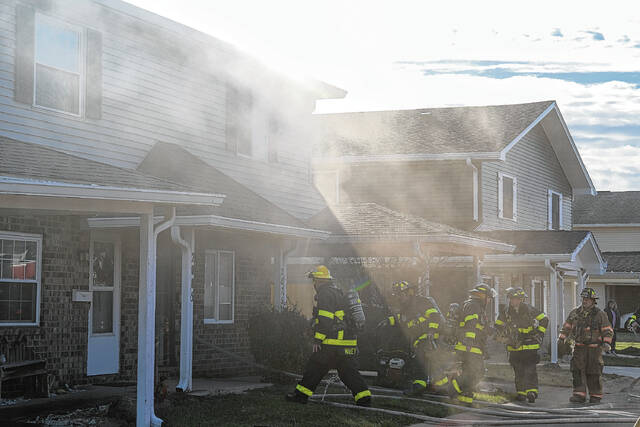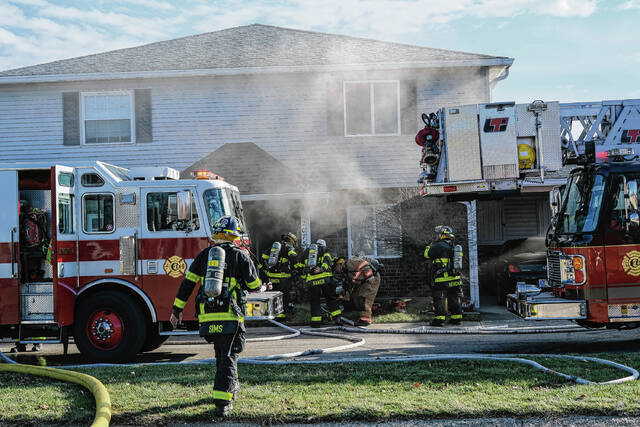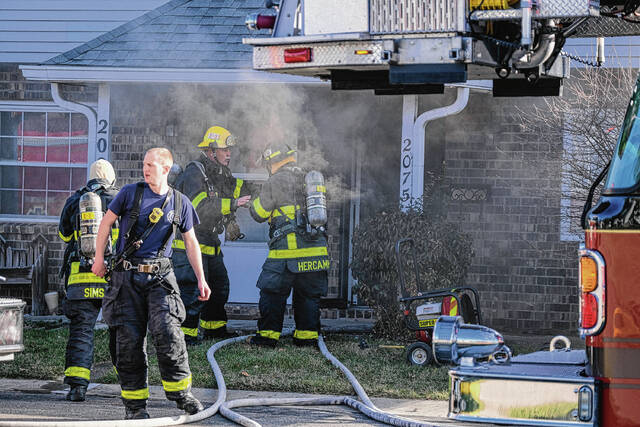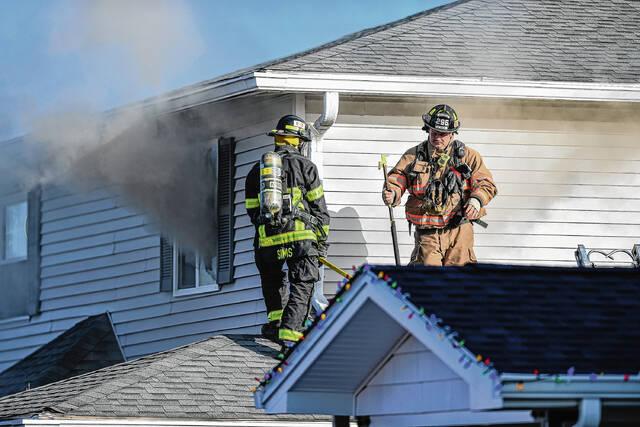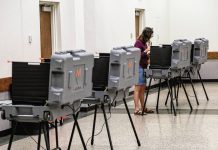A preliminary evaluation of Columbus city parks shows local parks are good, but not quite great.
That ranking information is included in an initial draft of a needs assessment presented May 25 to Columbus Park Board members by Ryan P. Cambridge, a planning practice leader for consultant Browning Day Mullins Dierdorf of Indianapolis.
Local residents are invited to participate in the process of helping the parks department determine its priorities for the next five years by attending a visioning workshop at Donner Center, one of the facilities being evaluated, from 6:30 to 8 p.m. Wednesday, which will be preceded by an invitation-only stakeholder meeting earlier that day.
The new parks master plan will determine the capital budget for parks spending for the next five years and will include a decision on the future of Donner Center, parks and recreation department director Mark Jones said.
[sc:text-divider text-divider-title=”Story continues below gallery” ]
The city is considering renovating Donner Center, or possibly demolishing it and starting with new construction, to address physical shortcomings of the 70-year-old building, Columbus Mayor Jim Lienhoop said in his State of the City address in March. The building, which opened in 1947, is home to the parks department and hosts meetings and events.
However, the city is struggling to keep up on maintenance for the center, and Jones has said plumbing issues and peeling paint continue as ongoing issues. The restrooms do not comply with federal disability access requirements and many of the appliances in the center’s kitchen don’t work. Crumbling bricks on the exterior are also a concern.
In the assessment, Cambridge said buildings such as the Donner Center have been bypassed by time. They were not designed to meet modern-day expectations of an open, bustling community recreational center or the idea of having neighborhood parks that draw families with a wide variety of self-directed activities, he said.
“You’re stuck in an old model,” Cambridge said to the board. “There’s a new model in play for parks, and you are at a place that was about 10 years ago.”
He described that old model as parks departments placing playground equipment in an area and mowing a lot of greenspace around it, along with having some picnic tables.
But the new generation of potential parkgoers want a more multi-faceted park, something allowing them to explore different activities, he said. Park systems that have implemented this new model include Bloomington, Carmel and Grand Rapids, Michigan, which requires a business plan for each park that the city operates.
“The core principal of a 21st century park is flexibility,” Cambridge said. “Twenty-first century parks allow self-directed activities to activate space.”
Creating the assessment
The needs assessment presentation for local parks represents the results of stakeholder interviews, a public workshop with community input, staff interviews, focus groups, a demographic analysis, a level of service analysis, a programs overview and a public survey, Cambridge said.
Input from the community showed the top interests from the public were freshwater fishing, archery, bowling, hunting with a shotgun, softball, hunting with a rifle, baseball, canoeing, golf, walking and target shooting, indicating outdoor-related activities tended to score higher on the list.
Mill Race Park was listed at the top when people were surveyed on how a particular park stacked up to their own expectations as to ease in walking or biking to the park, overall attractiveness, mix of uses and maintenance quality. The Commons came in second and Lincoln Park was third.
In the bottom three of the ratings were Donner Center, Richards School Park and the Par 3 Golf Course, the draft document states.
When the statistics were up on a large screen, parks board member Julie Abedian looked at the array of scores and asked, “So this means 45 percent of our parks are not meeting expectations?”
“My opinion is this shows you have a lot of real good things (in the parks),” Cambridge said. “They need fine-tuning to be great,” he said.
The age of some of the parks and their facilities and what’s in them leads to that conclusion from the community, he said.
Using the Columbus parks 2016 calendar, the consultants dissected program offerings and determined that the department’s offerings were concentrated in three buildings, Donner Center, Hamilton Community Center & Ice Arena and Columbus Gymnastics, and were mainly concentrated on athletics, including ice sports, gymnastics and aquatics.
The majority of programming was labeled as “youth restricted,” meaning it was targeting specific age groups of youngsters — at 62.4 percent, the draft stated. The next highest category was 15.4 percent for adult program, and 10.3 percent for all ages.
Cambridge said the preliminary findings show the department is focusing on athletics for its indoor programming, rather than programming that could be provided by a community recreational center. There are few opportunities for parks or recreation west of the I-65 interchange, leaving that area without nearby park access, Cambridge said.
The consultants also found the parks department had no dedicated programs for seniors and limited programming for people with special needs.
The average programming cost per participant was listed at $49, the draft states.
Cambridge also pointed out the preliminary draft shows Columbus has two golf courses, but only 3.4 percent of the parks programming is golf-related.
“If that’s the case, you may need to think strategically about these golf courses in the future,” he said, as the facilities, which are now run by the parks department after being contracted out for years, are expensive.
Setting priorities
The top three priorities selected for the parks from a Nov. 14 stakeholders group of 64 people representing 28 different community groups were:
- High-quality experiences, programs and facilities
- Focus on serving a diverse community
- Embracing access to the city’s natural systems.
However, the top three priorities selected in the public workshop were:
- Pickleball courts
- Bicycle, walking and multi-purpose trails
- Small neighborhood parks
Cambridge acknowledged that pickleball fans may have stacked the deck at the public session, but in the overall, pickleball fell to an “intermediate” need for the Columbus parks rather than a “high need.”
The top three priorities for spending by the public group in the Nov. 14 meeting included:
- Development of new walking and biking trails
- Improvements to existing parks, trails, and facilities
- Construction of a new multi-use community center
In the overall summary for the draft proposal, Cambridge said the sentiments indicate Columbus residents are interested in an indoor community recreation center, new bikeways and trails and a chance to experience nature, such as having a nature center. Improvements to existing parks, upgrades to the golf courses and programming and the possibility of additional greenspace and parks were also priorities, the draft indicates.
Intermediate goals include improved outreach to the community, flexible multi-purpose facilities and senior programs and events, the draft states.
Cambridge said the community feedback provides an opportunity to grab some “low-hanging fruit” that would be easy to implement, such as expanding on the nature idea — because of the natural beauty and experiences that already exist in Columbus.
“This is about how do we improve what we have, and what are the barriers that we have to do that,” he said.
Jones said the draft document also provides opportunities for the parks to consider partnering with different community organizations already working on projects such as a bicycle/pedestrian plan or other recreational opportunities.
Cambridge said the visioning process on Wednesday will be important for the plan, as it’s important for the parks to start the idea process for the future together.
“The community is the expert,” he said.
[sc:pullout-title pullout-title=”If you go” ][sc:pullout-text-begin]
What: City of Columbus Parks Visioning Workshop
When: 6:30 to 8 p.m. June 7
Where: Donner Center, 739 22nd St.
How much: Free
Hosted by: City of Columbus and consultant Browning Day Mullins Dierdorf, Indianapolis
[sc:pullout-text-end][sc:pullout-title pullout-title=”Recommended priorities for city parks” ][sc:pullout-text-begin]
An overall draft summary of needs and priorities for the Columbus parks system includes this list of high priorities and intermediate priorities, as identified by stakeholders, a public survey, input workshops and analysis. Rankings below are in order of priority.
High priorities
- Indoor recreation centers
- Bikeways and trails
- Natural experiences and programs
- Additional parks and grenspaces
- Indoor recreation programs
- Golf course and programming
- Improvements to existing parks/facilities
Intermediate priorities
- Flexible multi-purpose facilities
- Improved outreach/promotion
- Improved signage/wayfinding
- Pools
- Pickleball courts
- Senior programs and events
— Source: Draft document of the 2017-2021 Columbus Parks and Recreation System Master Plan Needs Assessment Findings
[sc:pullout-text-end][sc:pullout-title pullout-title=”Survey says…” ][sc:pullout-text-begin]
A public opinion survey about the Columbus parks system was conducted Nov. 14 through Jan. 6, asking 29 questions about the parks. There were 954 responses, with 95 percent saying they lived in Columbus. Here are some of the results:
Parks most commonly visited
- Mill Race Park, 80.2 percent
- The Commons, 77.7 percent
- Donner Park, 67 percent
- People Trail Network, 59.2 percent
- Donner Aquatic Center, 39.4 percent
Least visited parks
- Everroad Park, 1.4 percent
- Morningside Park, 1.2 percent
- Northbrook Park, 1.2 percent
- Eighth Street Park, 0.9 percent
- Amberly Park, 0.6 percent
Rate the quality of parks
Good: 65.4 percent
Fair: 19.6 percent
Excellent: 13.2 percent
Poor: 0.8 percent
Rate the quality of parks programming
Good: 46.8 percent
Excellent: 17.84 percent
Fair: 9 percent
Poor: 1.7 percent
Commonly used alternative providers to parks
Churches/Places of worship, 53.1 percent
Public schools: 45.3 percent
Youth sports associations/travel sports: 29.9 percent
Boys & Girls Club: 24.7 percent
Private recreation centers: 21 percent
High-priority needs for local parks
- Bicycle, walking and multi-purpose trails
- Nature trails
- Small neighborhood parks within walking distance
High-priority program needs for local parks
- Adult fitness classes
- Nature programs/environmental education
- Community special events
Source: Public opinion survey by SurveyMonkey and Columbus Parks system
[sc:pullout-text-end]

